“Servus”, “Pfüat di” and other Austrian Expressions
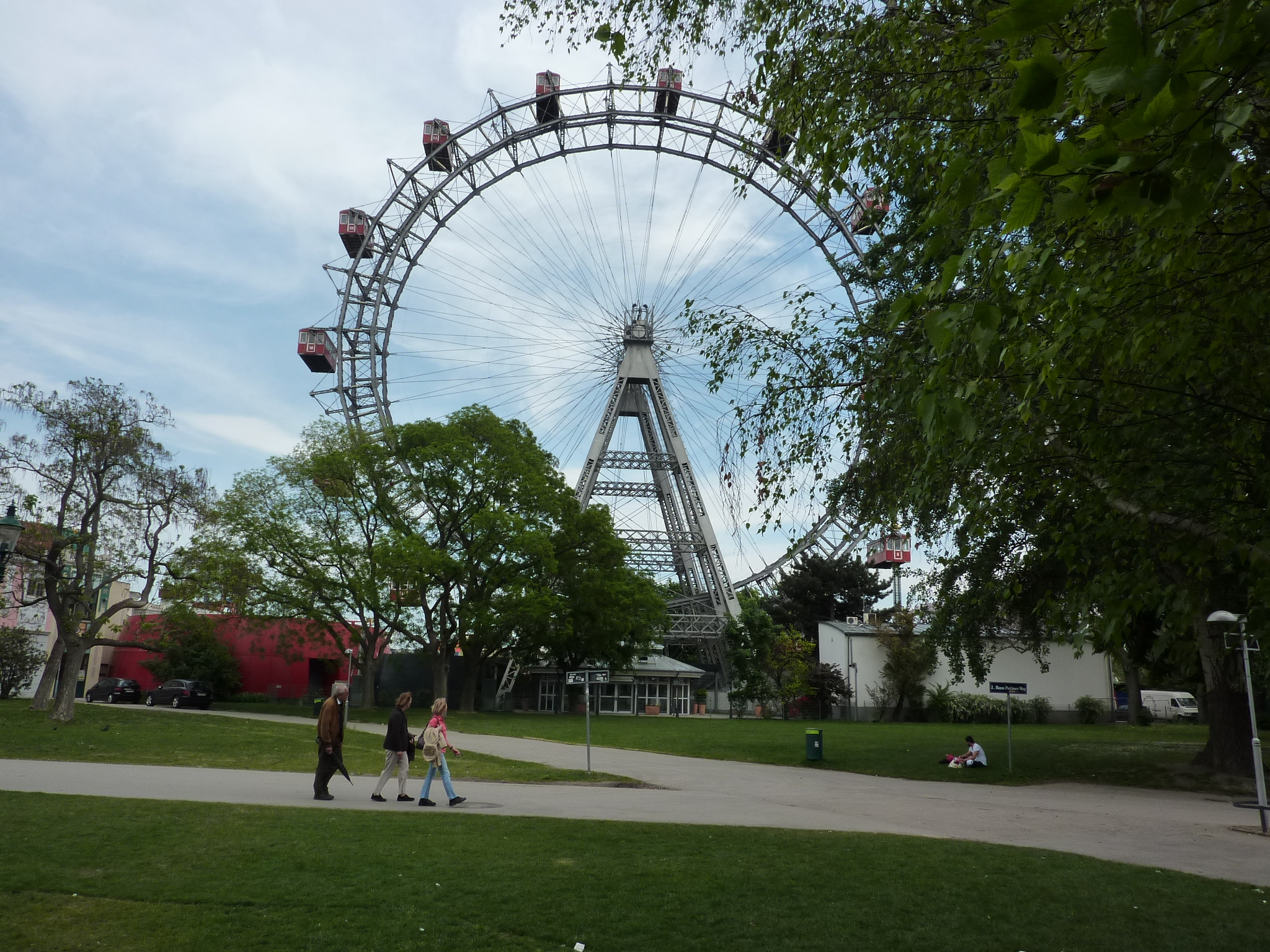 An English speaker who learned standard German and hears “Servus”, “Pfüat di” and other Austrian expressions will often be puzzled. And understanding a conversation held entirely in Austro-Bavarian dialect will really be challenging - it even will be for Germans from northern regions.
An English speaker who learned standard German and hears “Servus”, “Pfüat di” and other Austrian expressions will often be puzzled. And understanding a conversation held entirely in Austro-Bavarian dialect will really be challenging - it even will be for Germans from northern regions.
German and foreign visitors to Vienna, Austria's capital, who visit "The Prater", often wonder about its name. The word comes from the Latin "pratum", meaning meadow. The Prater first served as an imperial hunting ground and later became a public park. "Das Riesenrad", the giant Ferris Wheel (see picture) in the amusement section of Vienna's Prater, was built in 1897. Movie buffs will recognize it from several movies, Orson Welles' classic of 1949, "Der Dritte Mann" (The Third Man), "The Living Day Lights" with James Bond, and "Before Sunrise".
The German spoken in Austria is part of the Austro-Bavarian dialect, which 12-14 million people speak as their daily language. It is the largest German dialect group. In general, for those speakers who have had exposure to both, Standard German and Austro-Bavarian are mutually intelligible.
Austro-Bavarian is spoken in all of Austria, except in the western province of Vorarlberg. (The dialect group there is Alemannic, versions of which which is also spoken in parts of Bavaria, in Baden-Württemberg, and in German-speaking Switzerland. See also our post: “Gruezi" and Other Swiss German Expressions )
Last summer, we had the chance to travel in Austria and meet up with family and friends. I loved hearing and speaking the sounds of the language I grew up with. Even just the distinct melody of someone speaking Austrian makes memories rush in. As a child, I lived with my family in the Vienna outskirts. During Easter vacation we skied for a week in the Vorarlberg Alps. Each summer we spent a few weeks at the Ossiachersee, a beautiful lake in the southern province of Carinthia.
So, it’s been fun to dig out some of the common Austrian words and expressions that a traveler to Austria might hear and see.
(For those readers with a good knowledge of German, this classic YouTube clip of Der Herr Karl, performed by Helmut Qualtinger, will give you a taste of the Austrian/Viennese dialect.)
To get you started, here are 15 words and expressions that are typically used in Austria. I've added the standard German equivalent, and a translation.
1 Servus! or, Servas! (Hallo, Tschüss - Hello, Bye)
Literally, “(Your) servant!”. This informal greeting is used with friends and means both “Hello” and “Goodbye”.
Origin: from the Latin word “servus” meaning, “Sklave, Diener” (slave, servant).
Note: Young people also use a variety of other informal greetings in Austria, such as “Hallo”, “Hi”, “Hey”.
2 Grüß Gott! (Guten Tag! - Hello!)
Literally: “God greets you!” This is the standard greeting you would use in shops, at a ticket counter, etc, or with people you’ve just met. In Northern Germany, you'll normally hear “Moin”. An Austrian variation used with friends, would be “Griaß di” (I greet you) or the plural “Griaß eich”.
Origin: from the traditional greeting “Grüß dich Gott” or “Möge dich Gott segnen" (May God bless you).
3 Pfiüat di! (Tschüss! - Bye!)
Literally: “May God protect you!” This is an informal way to say “Bye” to friends.
Origin: from the earlier German expression “G'behüt' di”, a contraction of the phrase “Gott behüt dich” (May God protect you).
Note: Other informal words for “Bye” commonly used in Austria are “Baba”, “Tschüss”, “Ciao”.
4 Passt scho! (In Ordnung! - That’s good!, Fine!)
Literally: “It fits already”, as for “Es passt (schon)”. You’ll hear this everywhere in Austria as an expression of agreement, also as an alternative of “Okay”.
Origin: from the French “passer”, primarily in the meaning “ça passe” (that’s acceptable).
5 Na geh’! (Wirklich? - Really?, You must be kidding!)
Sort of literally: “Go on!” This phrase expresses surprise and often disbelief.
6 So a Gfrett! (Wie ärgerlich! - What a nuisance!)
Literally: "Such a hardship!" “Gfrett” means “Ärger, Mühsal” (trouble, hardship). You use it when you're annoyed.
Origin: from the dialect expression “sich fretten”, meaning, “sich plagen” (to scrape along, to slave away).
7 a Heuriger (ein Jungwein - a young wine, wine of the year)
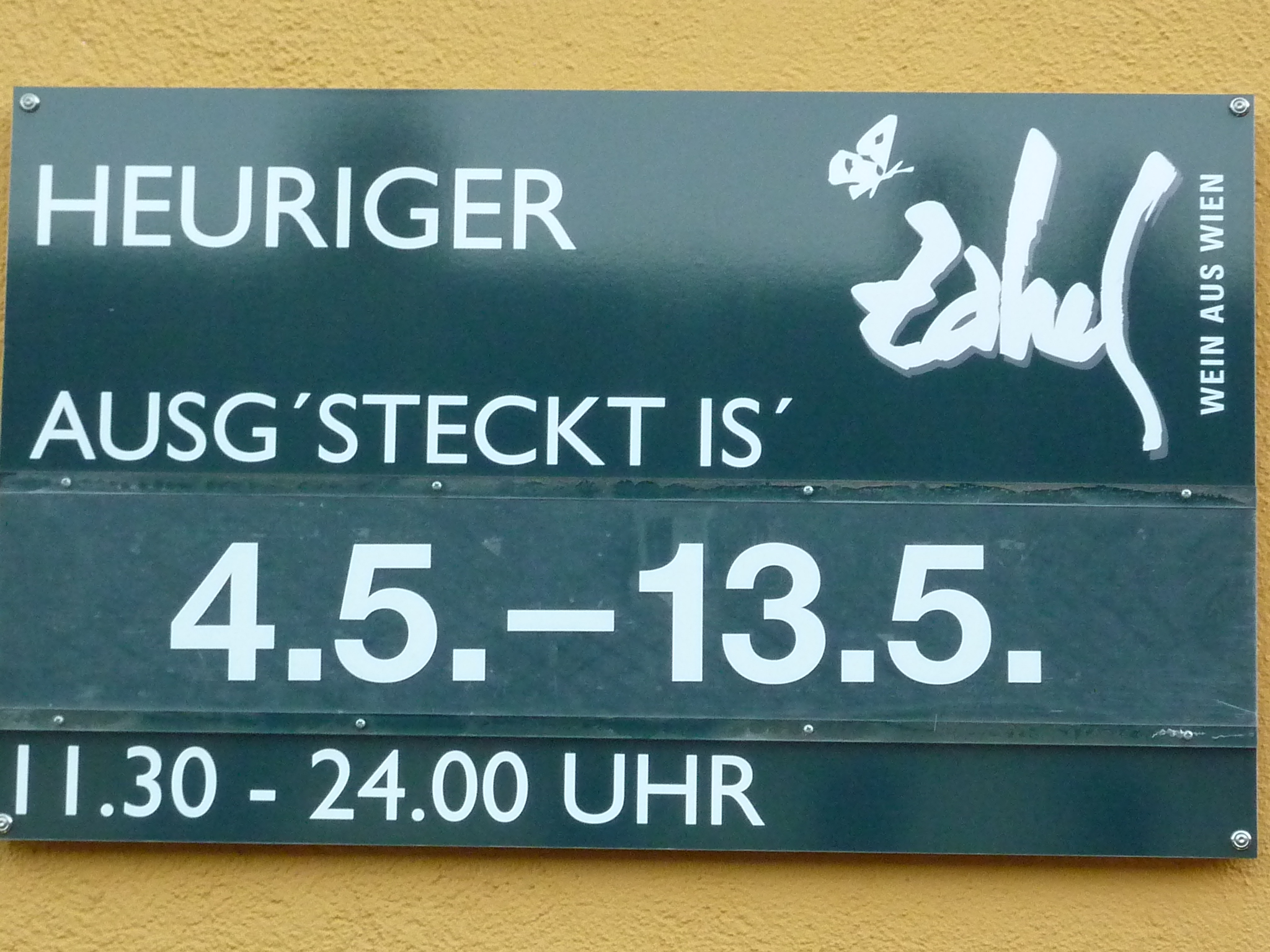 Literally: “this year’s (wine)”. (Wein der letzten Lese - wine from this year’s harvest). "Heuriger" is also the name of a tavern where such a wine is served. In this context, "Ausgesteckt" means "We're Open!"
Literally: “this year’s (wine)”. (Wein der letzten Lese - wine from this year’s harvest). "Heuriger" is also the name of a tavern where such a wine is served. In this context, "Ausgesteckt" means "We're Open!"
Origin: from the Old High German phrase “hiu järu” meaning “in diesem Jahre” (in this year).
Note: “The tradition originated in medieval times, and was inscribed as a UNESCO Intangible Cultural Heritage in 2019. In the spirit of Gemütlichkeit (congeniality), friends and family meet at a heurigen to enjoy wine, cheeses, charcuterie, bread, salads, and a variety of Viennese spreads and pickled foods, plus Viennese folk music. ” [Paste Magazine, February 12, 2024]
8 die Semmel (das Brötchen - roll)
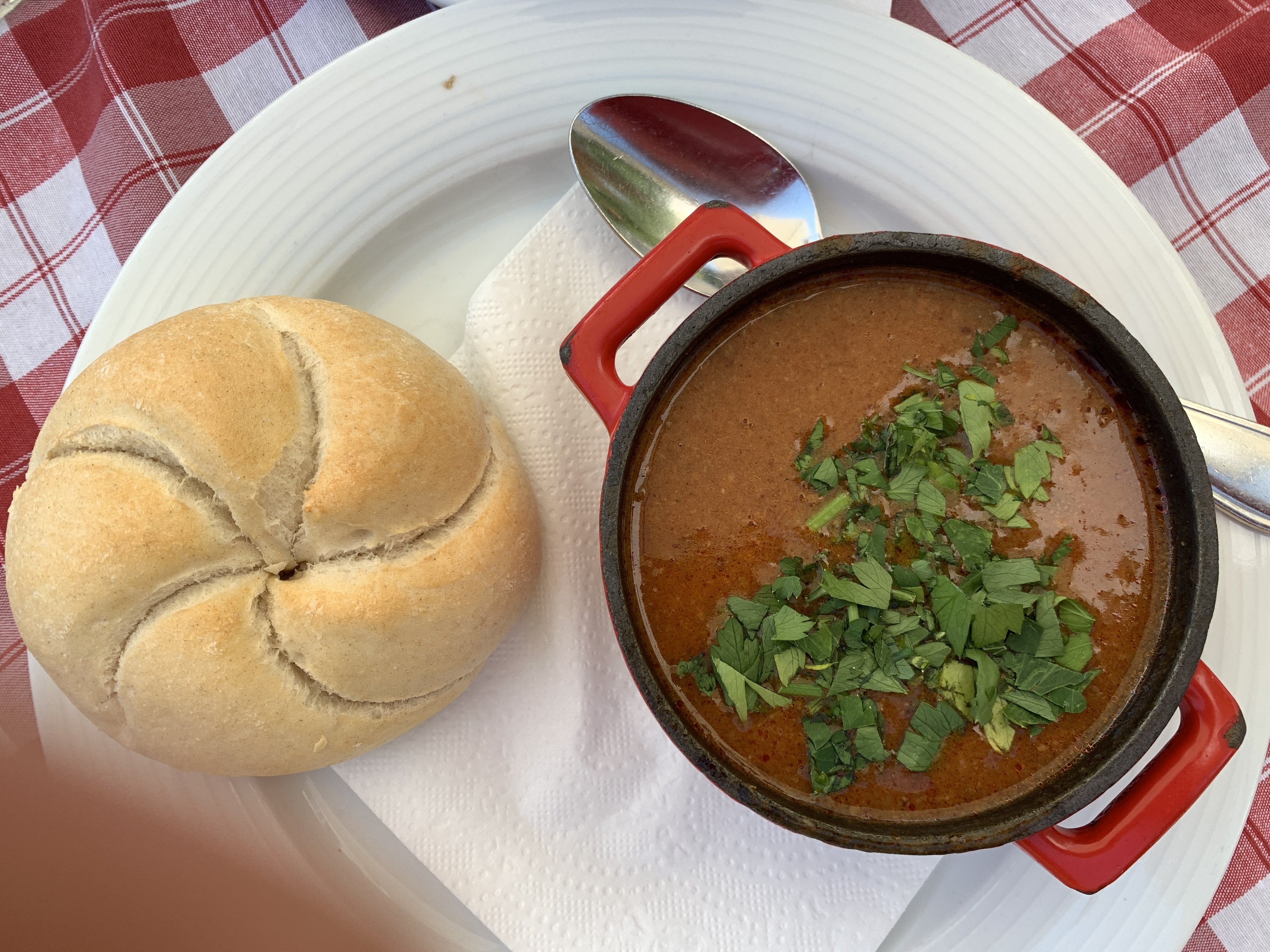 Origin: from the Latin word “similia”, which means “feines Weizenmehl” (high quality wheat flour).
Origin: from the Latin word “similia”, which means “feines Weizenmehl” (high quality wheat flour).
Note: In Austria, “Semmel”, is also called “Kaisersemmel”. A story claims that its name goes back to a decree by emperor Joseph II, in the year 1789. A "Semmel" is a traditional bread roll that has a typical pattern on top. (see picture) It is crispy on the outside and soft on the inside. The word “Semmel” is known in other German-speaking regions, but may refer to different types of baked goods.
9 der Palatschinken (der Pfannkuchen - thin pancake, crepe)
Origin: from the Latin word “placenta” , meaning “Kuchen” (cake), to Rumanian “placinta”, to Hungarian “palacsinta”, to Czech “palacinky”. (Hermann Paul, Deutsches Wörterbuch)
Note: "Palatschinken" are usually served as a dessert. They are rolled with a sweet filling such as apricot jam or quark/farmers cheese and dusted with powdered sugar.
10 der Kaiserschmarrn
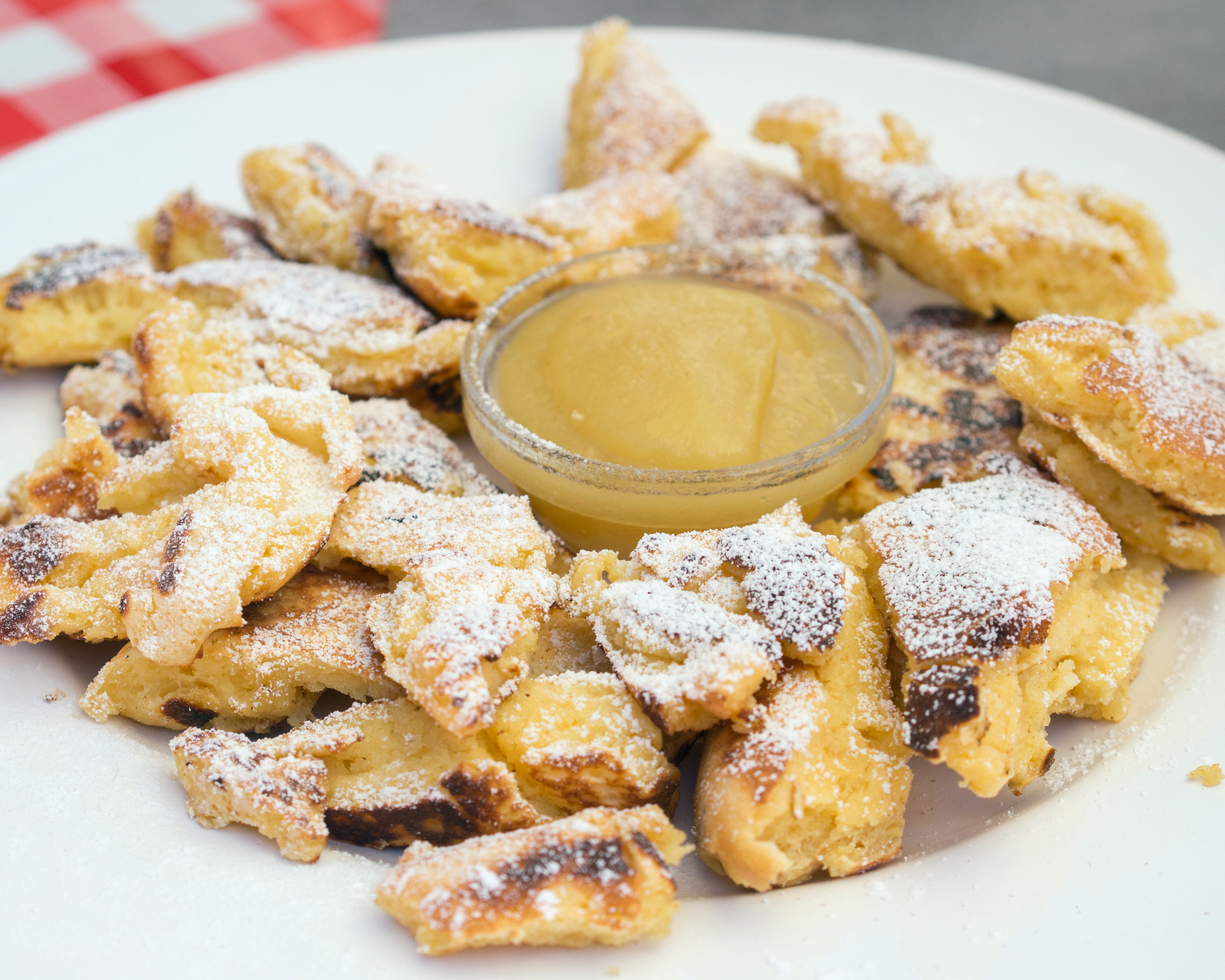 Literally: "Schmarrn" means "mess, mishmash, nonsense".
Literally: "Schmarrn" means "mess, mishmash, nonsense".
Note: To make this mishmash, pour Palatschinken dough into a pan, cook it, shred it, add butter and raisins, and finally scramble everything together. What you then have is a "Schmarrn", nice and messy and delicious. You serve it with apple sauce or plum compote. As one of the stories goes, the Austrian Emperor Franz Josef (1830-1916) loved this haphazardly-made dish, which his kitchen produced by mistake. (Image:By Takeaway - Own work, CC BY-SA 4.0, https://commons.wikimedia.org/w/index.php?curid=42341737)
11 der Zwetschkenkuchen (der Pflaumenkuchen - plum tart)
Origin: the word “Zwetschke” comes from the Rumanian “davascena, damascena” meaning “Pflaume von Damascus” (plum from Damascus). [Hermann Paul, Deutsches Wörterbuch]
Note the expression: “seine sieben Zwetschken einpacken”, wich literally means “to pack one’s seven plums”. This is an Austrian variation of “seine Siebensachen einpacken”. “Siebensachen” (seven things) stand for “whatever you own”.
12 Nockerln (Klößchen – dumplings)
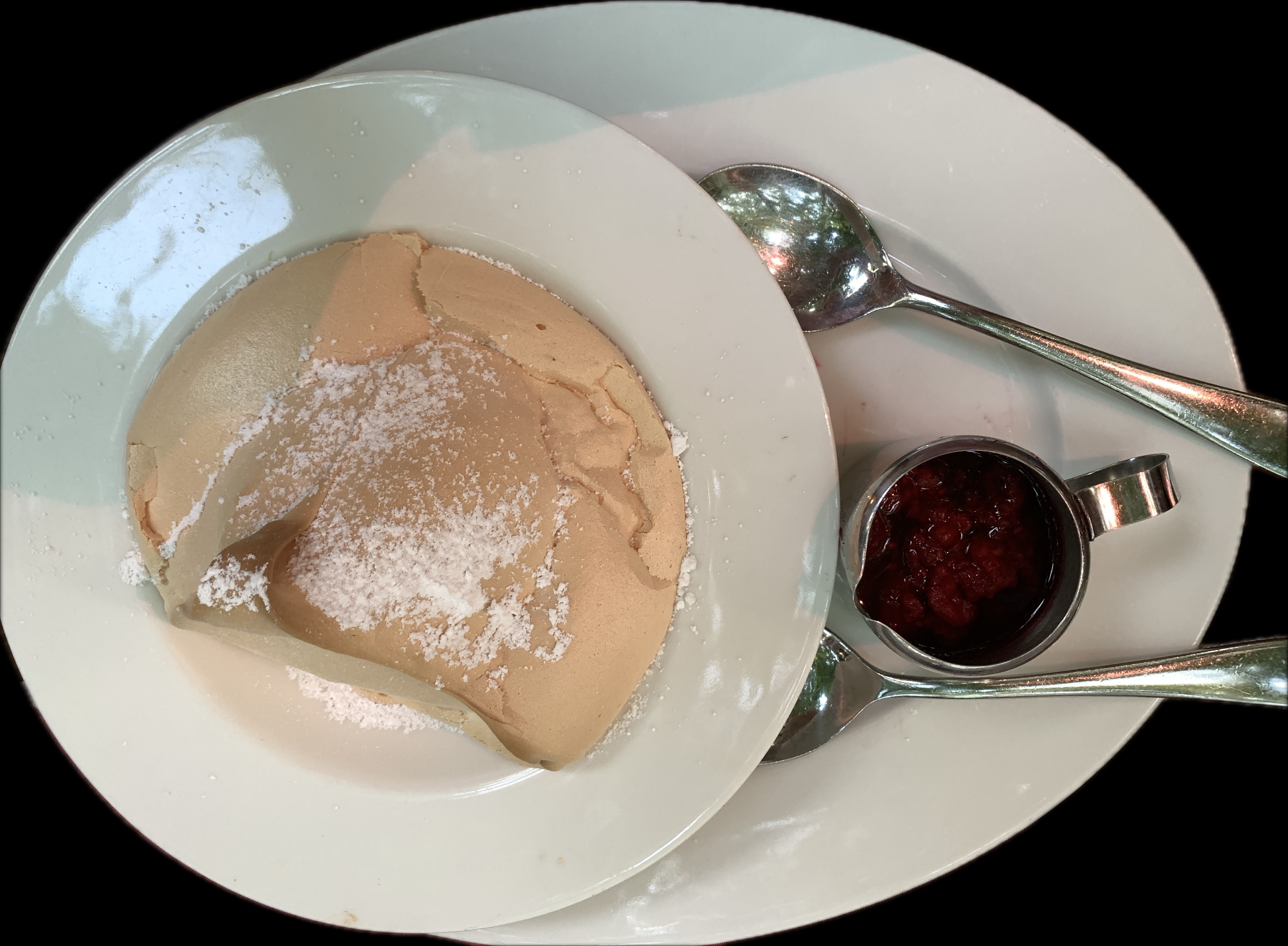 Origin: from the older German word “Nocken” (clumps, small hills). And, there may or may not be a connection between the Italian word “Nockerl” and the Italian word “gnocchi”.
Origin: from the older German word “Nocken” (clumps, small hills). And, there may or may not be a connection between the Italian word “Nockerl” and the Italian word “gnocchi”.
Note: In Vienna, “Eiernockerln” (egg dumplings) are a specialty and served as a side with meat, and or a salad. On the other hand, the famous “Salzburger Nockerl” (see picture) are a dessert soufflé, served warm and with a dusting of powdered sugar.
13 der Pareidiser (die Tomate – tomato)
Literally “apple of paradise”.
Origin: The “tomato”, called “tomatl” in the Mexican language Nahuatl, was brought to Europe from South America at around 1500 A.D. In Europa the unknown red fruit was soon named “Paradies-Apfel”, which in time shortened to “Paradeiser”. [Kurier, 26.08.22
14 der Karfiol (der Blumenkohl – cauliflower)
Origin: from the Italian word "cavolfiore", (cabbage flower). In fact, the Standard German word “Blumenkohl” literally means “flower cabbage”.
15 der Spezi (der Kumpel – buddy, really good friend)
Origin: a shortened version of “Spezialfreund” (special friend, very good friend), commonly used since the 19th century.
That Austria's language was impacted by its history is not surprising. Even just looking at the period from 1867 to 1918: today's Austria was then the center of the Austro-Hungarian Empire, ruled by the House of Habsburg. The territory included Hungary, Bohemia, Moravia, Bukovina, Transylvania, Carniola, Küstenland, Dalmatia, Croatia, Fiume, and Galicia, in other words, numerous ethnic and linguistic regions.
By ArdadN - Transferred from en.wikipedia to Commons., Public Domain, https://commons.wikimedia.org/w/index.php?curid=5867649
Today Austria shares its borders with 8 countries: Germany (northwest), the Czech Republic (north), Slovakia (northeast), Hungary (east), Slovenia (south), Italy (southwest), Liechtenstein, and Switzerland (west).
And with the open borders of the Schengen agreement, the neighboring languages will continue to influence the Austrian dialect.
Bio: Ulrike & Peter Rettig are co-founders of Gamesforlanguage.com. They are lifelong language learners, growing up in several European countries before moving to Canada and the United States. You can follow them on Facebook, Bluesky, and Instagram.
